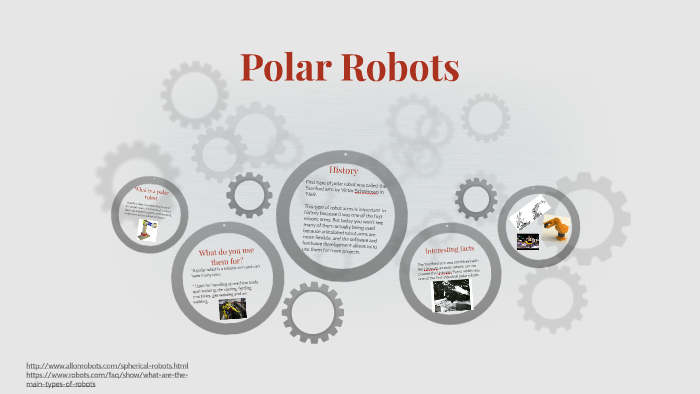The polar regions of our planet are undergoing profound transformation due to the increase in global temperatures, a phenomenon that is not merely alarming but crucial to understand. As ice sheets continue to melt and ecosystems shift, the need for innovative solutions becomes increasingly pressing. Enter robotics—an emerging ally in our quest to grapple with the multifaceted effects of climate change in these fragile environments. How can robots help mitigate the polar impacts of global warming? The answers lie in the integration of advanced technology into environmental conservation strategies.
Monitoring the Environment
One of the most vital functions robots can serve in polar regions is the meticulous monitoring of climate conditions and ecosystem shifts. Autonomous drones, equipped with sophisticated sensors, can traverse the vast expanses of ice and snow, collecting data far more efficiently than human researchers. These aerial sentinels capture high-resolution images and environmental parameters such as temperature, humidity, and atmospheric gases. This real-time data collection is essential for understanding how warming trends are affecting polar landscapes and wildlife.
Furthermore, underwater robots known as remotely operated vehicles (ROVs) can explore the depths of polar oceans, a realm often overlooked or difficult to access. Equipped with cameras and sampling tools, these ROVs can assess the health of marine ecosystems, gauge the impacts of ocean acidification, and monitor changes in biodiversity. The insights provided by these technological marvels empower scientists to make informed predictions about future ecological equilibria.
Restoration and Preservation
Robots are poised to play a pivotal role in restoration efforts in the vulnerable polar regions. For instance, drones can facilitate the reforestation of tundra areas by dispersing native plant seeds across inhospitable terrain. The ability to reach remote locations enhances the potential for biodiversity recovery, which is essential for ecosystem resilience. By using precise algorithms to analyze the best sites for seed dispersal, these autonomous machines maximize the chances of successful growth in challenging climates.
In addition to reforestation, robotic technology can assist in preserving existing habitats. Robotic guards equipped with surveillance systems can deter illegal activities such as poaching or habitat destruction, thus protecting vulnerable species from human encroachment. Such proactive measures can significantly contribute to the conservation of Finnish reindeer herds or Arctic fox populations struggling against habitat loss.
Research and Development of Climate Solutions
Robots can also contribute to the development of innovative solutions targeting the root causes and effects of climate change. For example, robotic systems can be employed in climate change research laboratories, conducting experiments that span various fields, from renewable energy to carbon capture technologies. As researchers strive to unravel the complexities of climate dynamics, robotic assistance facilitates experimentation at an unprecedented scale and speed, ultimately driving the emergence of viable solutions.
Moreover, collaboration between robotics and artificial intelligence (AI) enables predictive modeling of climate scenarios. By analyzing vast datasets encompassing weather patterns, ice melt rates, and species distribution, AI-driven robots can simulate the possible outcomes of different environmental strategies. Through this computational insight, researchers become equipped to devise more effective climate action plans tailored to specific polar conditions.
Public Engagement and Education
Another tangible impact of robotics in polar regions is their potential in public engagement and education. Interactive robotic exhibits in museums or educational institutions can offer immersive experiences, allowing individuals to delve into the complexities of climate change. Virtual reality (VR) experiences facilitated by robotic systems can transport users to the ice sheets and glaciers, enabling them to witness firsthand the impacts of climate change.
By capturing the public’s imagination, these technologies cultivate a more profound sense of urgency regarding climate action. When individuals engage with the data collected by robots—such as tangible evidence of melting glaciers—this adoption of knowledge catalyzes broader conversations about environmental stewardship.
Challenges and Ethical Considerations
Despite the compelling promises presented by robotics in addressing the polar effects of global warming, challenges remain. Ethical considerations are paramount, particularly regarding the deployment of autonomous systems in sensitive wildlife habitats. The impact of robotic presence on animal behavior must be assessed thoroughly to avoid unintended consequences, such as disrupting migration patterns or nesting habits. Moreover, the need for comprehensive regulatory frameworks to govern the use of robotics in polar regions cannot be overstated.
Technical challenges also persist, including the development of robots capable of operating in extreme cold, navigating harsh terrains, and ensuring adequate power supply. Battery technology must advance to ensure that these machines can work effectively in remote areas for extended periods, capturing vital data without interruption.
A Vision for the Future
As we confront the realities of climate change, robots represent more than mere tools; they symbolize innovation and hope for the planet’s future. By enabling extensive monitoring, facilitating restoration, supporting research, and fostering education, robotic technology is positioned at the forefront of the climate crisis narrative. A paradigm shift is necessary, redefining our relationship with technology not only as a beneficial tool but as an integral component in the battle against the catastrophic effects of global warming.
In conclusion, the integration of robotics in polar regions is a burgeoning field, promising innovative approaches to addressing climate change. The synergies between technology and environmental preservation reflect a broader commitment to safeguarding our planet. As we look towards this exciting frontier, it is essential to foster a holistic understanding of both the potential and the limits of technological intervention. Every advancement moves us closer to a sustainable future, intertwining the ethos of environmental conservation with the imperative of modern technology.








